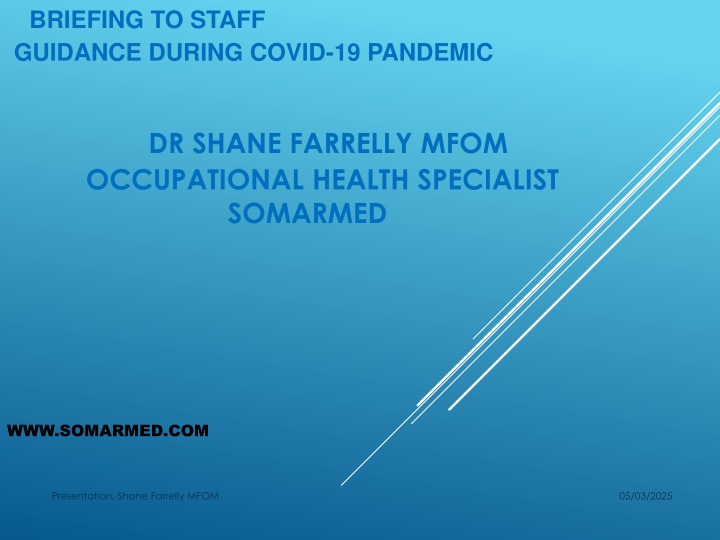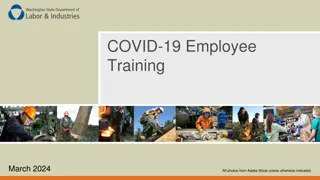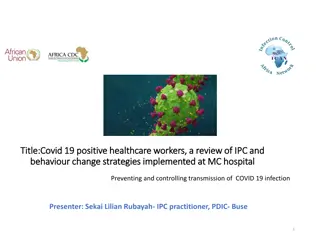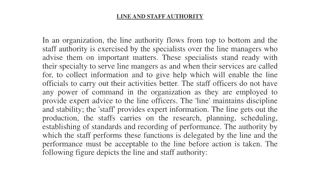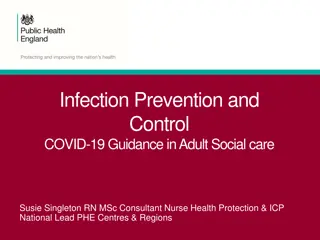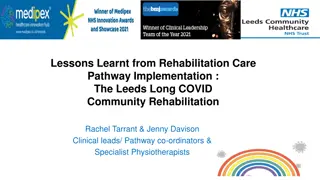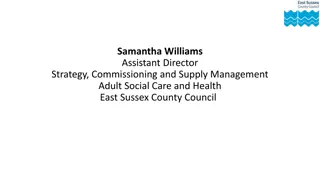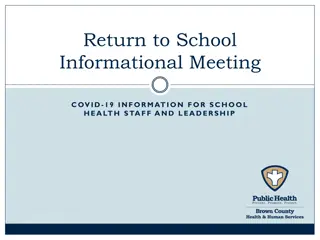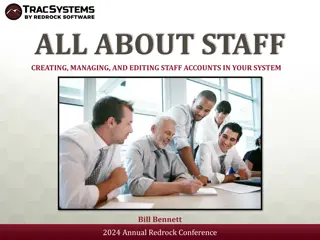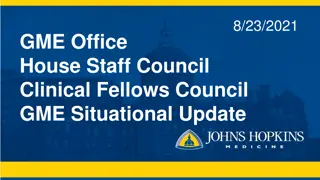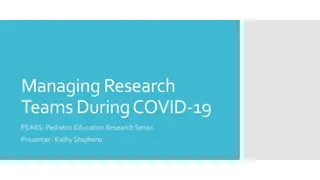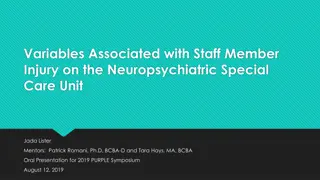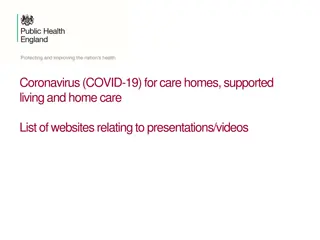COVID-19 Staff Guidance Summary
COVID-19 briefing for staff, covering key aspects such as virus characteristics, transmission, symptoms, survival on surfaces, and close contact definition. Includes expert insights and official sources for updated information.
Download Presentation

Please find below an Image/Link to download the presentation.
The content on the website is provided AS IS for your information and personal use only. It may not be sold, licensed, or shared on other websites without obtaining consent from the author.If you encounter any issues during the download, it is possible that the publisher has removed the file from their server.
You are allowed to download the files provided on this website for personal or commercial use, subject to the condition that they are used lawfully. All files are the property of their respective owners.
The content on the website is provided AS IS for your information and personal use only. It may not be sold, licensed, or shared on other websites without obtaining consent from the author.
E N D
Presentation Transcript
BRIEFING TO STAFF GUIDANCE DURING COVID-19 PANDEMIC DR SHANE FARRELLY MFOM OCCUPATIONAL HEALTH SPECIALIST SOMARMED WWW.SOMARMED.COM Presentation, Shane Farrelly MFOM 05/03/2025
WHAT WE NOW KNOW ABOUT COVID-19 It is a novel or new virus There is currently no cure or vaccine Effort on hand to explore anti-virals and develop a vaccine COVID-19 started in late 2019 in the Chinese city of Wuhan as a cluster of pneumonia cases with an unknown cause WHO has declared C0VID-19 as a pandemic Dr
WHAT WE NOW KNOW ABOUT COVID-19 It is highly infectious and transmitted by droplet spread 80% recover without needing any specialist treatment One in six become seriously ill and develop difficulty breathing Mortality rate of 2-4% compared to Influenza at 1% Keep informed from reputable sites not social media https://www.hse.ie/eng/services/news /newsfeatures/covid19-updates/ www.somarmed.com Updated daily Dr
WHAT WE NOW KNOW ABOUT COVID-19 Symptoms usually begin from day 6-12 after we have been exposed Symptoms can commence as early as day 2-3 and as late as day 14 Potentially infectious 48 hours before we develop symptoms and 48 hours after we have completely recovered 80% of cases make a full recovery after two weeks of illness Further information can be downloaded on www.somarmed.com Dr
WHAT WE NOW KNOW ABOUT COVID-19 COVID-19 typical survives on a surface from 5-6 hours up to at least 3-5 days or more on some porous surfaces-paper ,wood ,cardboard and fabric Up to 9 days on non-porous surfaces- glass, plastics , varnished wood and metal objects Over a week on door handles COVID-19 can be inactivated within one minute by surface disinfection with 62-71% ethanol 0.5% hydrogen peroxide 0.1% sodium hypochlorite Further information can be downloaded on www.somarmed.com Dr
WHAT IS MEANT BY CLOSE CONTACT Definition: A close contact is anyone who has had one of the following contacts with a confirmed case while the case is considered infectious: Living in the same household or household-like setting (e.g., in a hostel) as a COVID-19 case confirmed case or awaiting the result of a test to confirm the diagnosis Having spent two hours or longer in the same room, bus, Luas or train as a COVID-19 case Having been seated within two rows either side of a COVID- 19 case on a flight for two hours or longer Having been face-to-face within one metre or less of the case for more than 15 minutes in any other setting not listed above Further information can be downloaded on www.somarmed.com Dr
WHAT IS MEANT BY CASUAL CONTACT OF A COVID-19 CASE Definition: Any individual who has shared a closed space with a confirmed case for less than 2 hours Passengers on an aircraft sitting beyond two seats in any direction of a confirmed case Any individual who has shared a closed space with a confirmed case for longer than 2 hours but following a risk assessment by Public Health does not meet the definition of a close contact. Further information can be downloaded on www.somarmed.com Dr
COVID -19 TESTING Testing is currently still available in Ireland Your GP arranges the testing on line There can be a 3-4 day delay in facilitating the test A further 3-4 days getting the result Your GP determines if testing required Dr
SOCIAL DISTANCING Exercise, take walks/runs outside, and stay connected through phone, video, and other social media. But when you go outside, do your best to maintain at least six feet between you and non-family members. If you have kids, try not to use public facilities like playground structures, as coronavirus can live on plastic and metal for up to three days, and these structures aren't getting regularly cleaned. Going outside in and of itself doesn t increase the risk. It is really proximity to other human beings, and specifically to their secretions their sneezes and droplets. So the recommendation is to go outside if you can. Dr
HOW TO STAY MENTALLY HEALTHY AS A REMOTE WORKER Draw a line between work and home. Make sure you have a dedicated area where you do work, and nothing else even if it s just a corner of a kitchen table. Treat this as your office for now, and take regular breaks. Stick to your hours. It can be tempting to set Slack to busy and start work a little later or to keep burning through your tasks throughout the evening. This is counterproductive best practice dictates that you ought to keep to your regular hours. Keep yourself positive. Take advantage of being at home to set the mood. Make that nice coffee you keep as a treat, listen to the music no one else in the office likes, and keep the thermostat at the perfect temperature. Eat, exercise, and sleep. Physical health is intertwined with mental health, make sure you re getting good rest, eating well, and find exercises you can do from home. Schedule in socials. Put some time in the day where you re catching up with others about non-work topics, just as you would as work. Share a cup of tea with someone via a video call, or just pick up the phone, don t rely upon only typing and texting. Dr
HOW TO STAY MENTALLY HEALTHY AS A MANAGER WORKING REMOTELY Here are a few ways to support and care for your team: Get Ready. Don t wait for it to be necessary, prepare your technology and teams for remote working now, give it a trial run and make sure you ve discussed how your teams will communicate. Use technology to keep office morale up. Set up a Slack or Discord channel, use Microsoft Teams or even get a WhatsApp group together so everyone can stay in touch in real-time. Communicate. Stay in touch and talk regularly ask how people are doing, and if you can help. Companies need to check in on their teams at home, and individuals need to check in with their colleagues, and for those who are struggling, share how you re feeling, talking about the stresses really helps. Encourage people to work within the hours they should. If you see someone online beavering away at 7 pm, make sure they understand that they re not expected to. Reward and reassure people. Make sure they know that they re just as valued wherever they might be. Dr
STRESS AND COPING WITH THE UNCERTAINTY OF THE COVID-19 CRISIS The outbreak of coronavirus disease 2019 (COVID-19) may be stressful for people. Fear and anxiety about a disease can be overwhelming and cause strong emotions in adults and children. Coping with stress will make you, the people you care about, and your community stronger. Everyone reacts differently to stressful situations. How you respond to the outbreak can depend on your background, the things that make you different from other people, and the community you live in. People with preexisting mental health conditions should continue with their treatment and be aware of new or worsening symptoms. If you require support contact EAP Dr
STRESS AND COPING WITH THE UNCERTAINTY OF THE COVID-19 CRISIS Things you can do to support yourself Take breaks from watching, reading, or listening to news stories, including social media. Hearing about the pandemic repeatedly can be upsetting. Take care of your body. Take deep breaths, stretch, or meditate. Try to eat healthy, well-balanced meals, exercise regularly, get plenty of sleep, and avoid alcohol and drugs. Make time to unwind. Try to do some other activities you enjoy. Consider meditation www.breethe.net Connect with others. Talk with people you trust about your concerns and how you are feeling. Reduce stress in yourself and others Sharing the facts bout COVID-19 and understanding the actual risk to yourself and people you care about can make an outbreak less stressful.. When you share accurate information about COVID-19 you can help make people feel less stressed and allow you to connect with them. Dr
STRESS AND COPING WITH THE UNCERTAINTY OF THE COVID-19 CRISIS Look out for these common signs of stress: Feelings of numbness, disbelief, anxiety or fear. Changes in appetite, energy, and activity levels. Difficulty concentrating. Difficulty sleeping or nightmares and upsetting thoughts and images. Physical reactions, such as headaches, body pains, stomach problems, and skin rashes. Worsening of chronic health problems. Anger or short-temper. Increased use of alcohol, tobacco, or other drugs. If you experience these feelings or behaviors for several days in a row and are unable to carry out normal responsibilities because of them, contact EAP Dr
